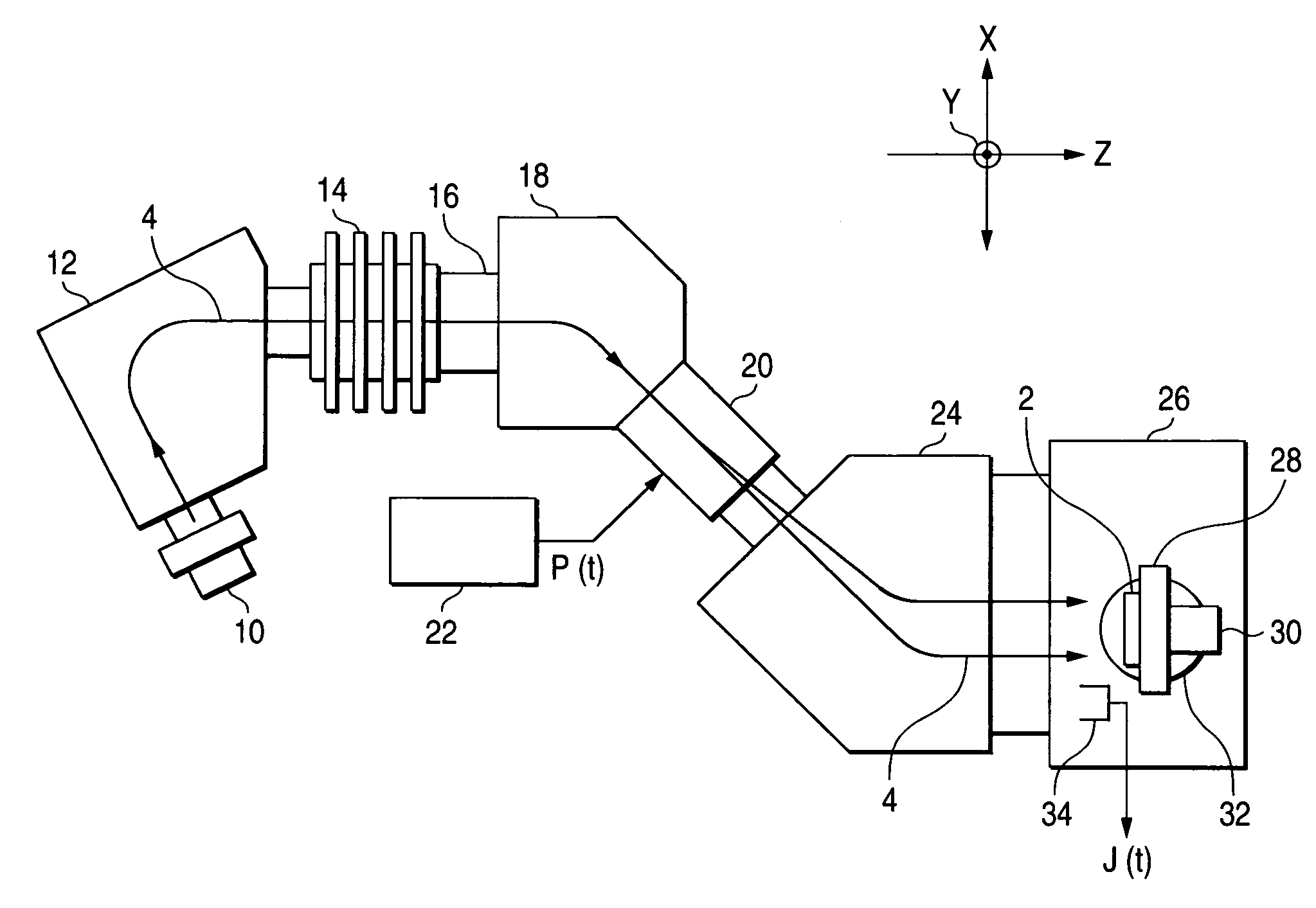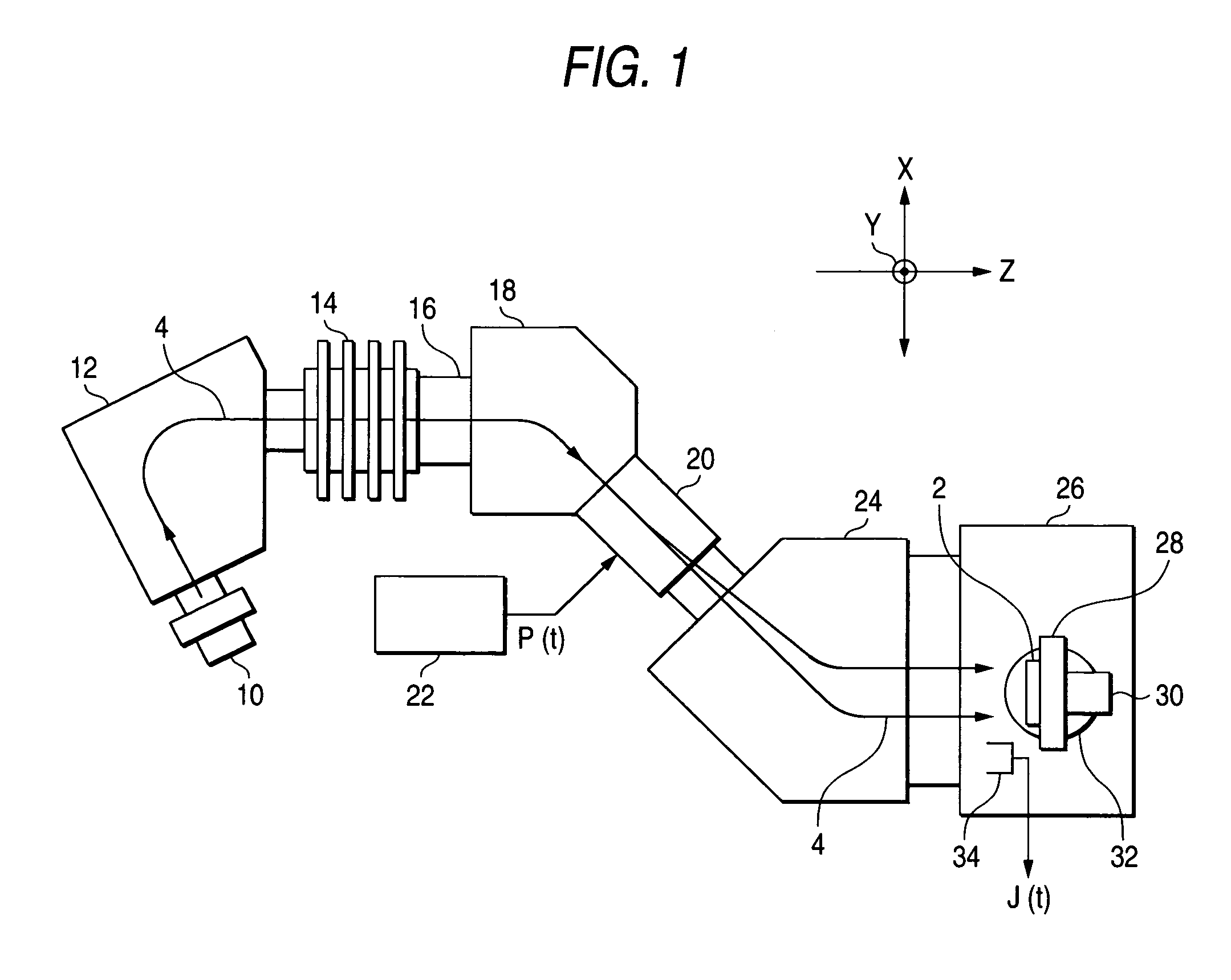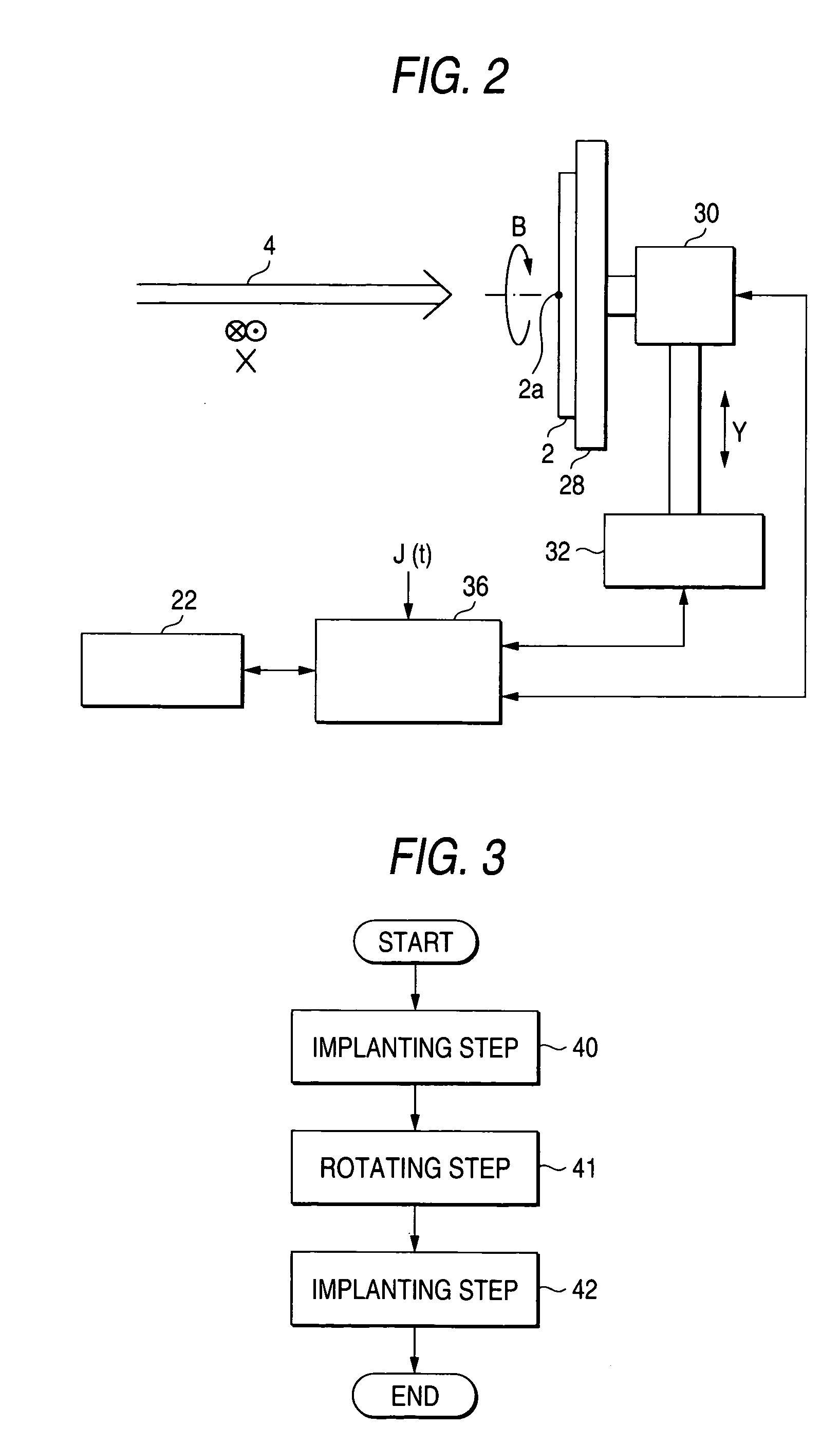Ion implanting method and apparatus
a technology which is applied in the field of implanting method and ion beam current, can solve the problems of inability to apply above conventional techniques, complicated control and mechanism, and inability to process substrates in a long time, so as to reduce the width of the transient region, prevent the reduction of beam current, and facilitate control
- Summary
- Abstract
- Description
- Claims
- Application Information
AI Technical Summary
Benefits of technology
Problems solved by technology
Method used
Image
Examples
Embodiment Construction
[0062]FIG. 1 is a schematic plan view showing an example of an ion implanting apparatus for implementing the ion implantation method according to this invention. FIG. 2 is an enlarged schematic side view showing an example of a mechanism in a vicinity of a substrate in the ion implanting apparatus shown in FIG. 1.
[0063]This ion implantation apparatus adopts a hybrid scan system.
[0064]In the ion implantation apparatus, an ion beam 4 is reciprocatively scanned in an X direction (e.g. horizontal direction) by an electric field or magnetic filed. A substrate (e.g. semiconductor device) is also reciprocatively mechanically driven in a Y direction (e.g. vertical direction), which is substantially orthogonal to the X direction. Thus, ions are implanted on an entire surface of the substrate 2 by co-operation.
[0065]More specifically, the ion implanting apparatus includes an ion source 10 for extracting an ion beam 4, a mass separating magnet 12 for selectively deriving a specific ion species...
PUM
| Property | Measurement | Unit |
|---|---|---|
| rotating angle | aaaaa | aaaaa |
| electric field | aaaaa | aaaaa |
| magnetic field | aaaaa | aaaaa |
Abstract
Description
Claims
Application Information
 Login to View More
Login to View More - R&D
- Intellectual Property
- Life Sciences
- Materials
- Tech Scout
- Unparalleled Data Quality
- Higher Quality Content
- 60% Fewer Hallucinations
Browse by: Latest US Patents, China's latest patents, Technical Efficacy Thesaurus, Application Domain, Technology Topic, Popular Technical Reports.
© 2025 PatSnap. All rights reserved.Legal|Privacy policy|Modern Slavery Act Transparency Statement|Sitemap|About US| Contact US: help@patsnap.com



